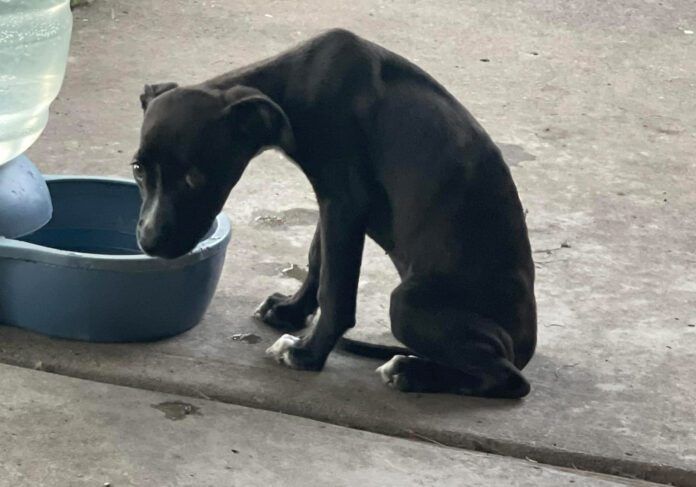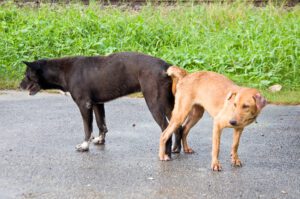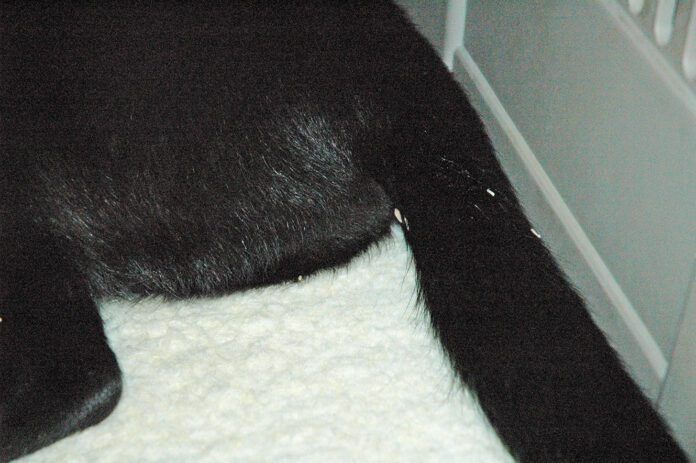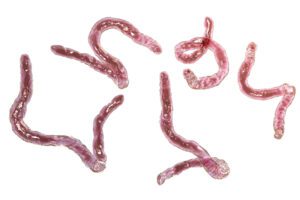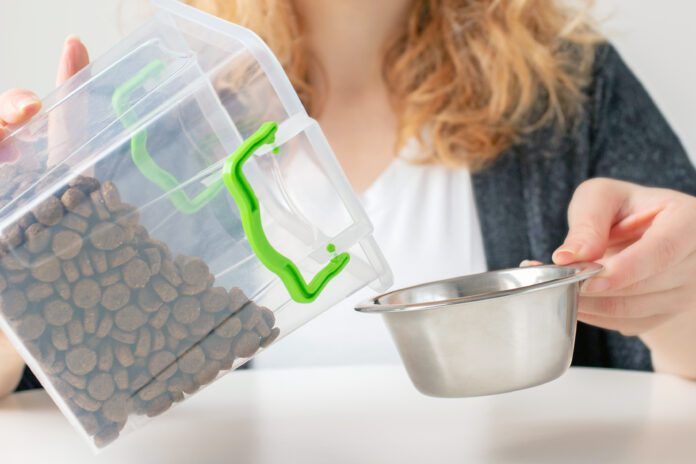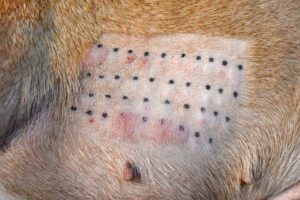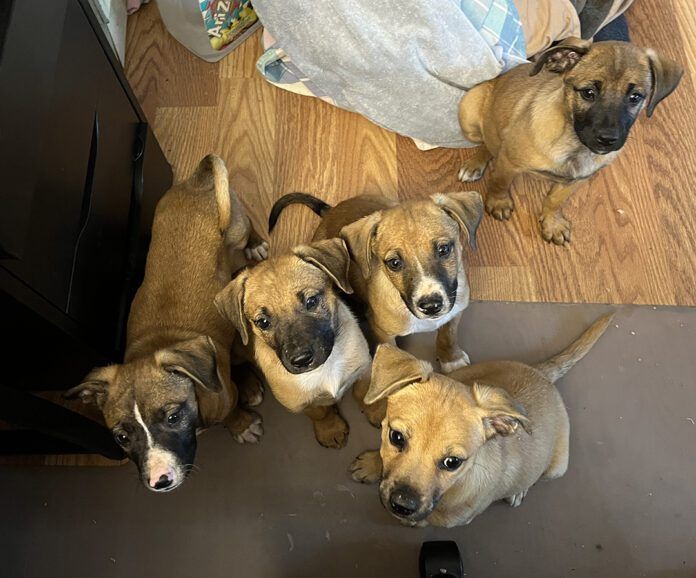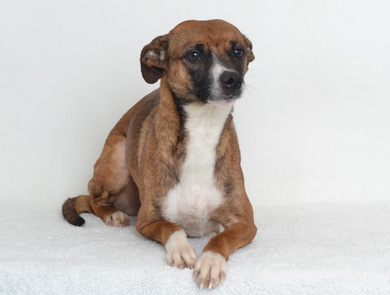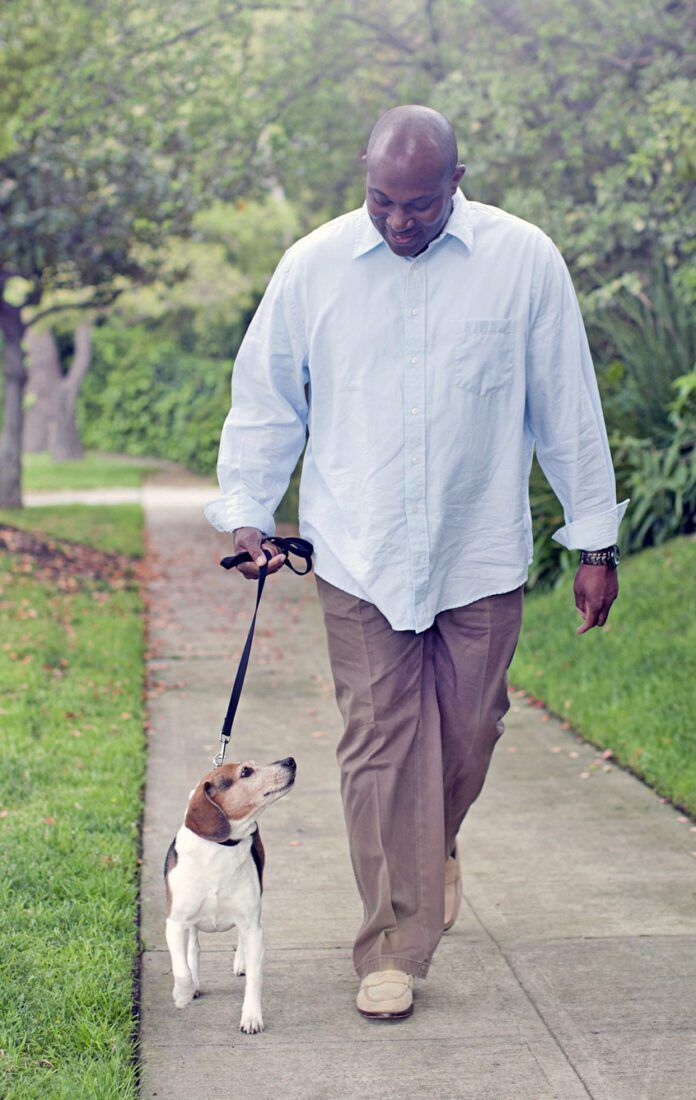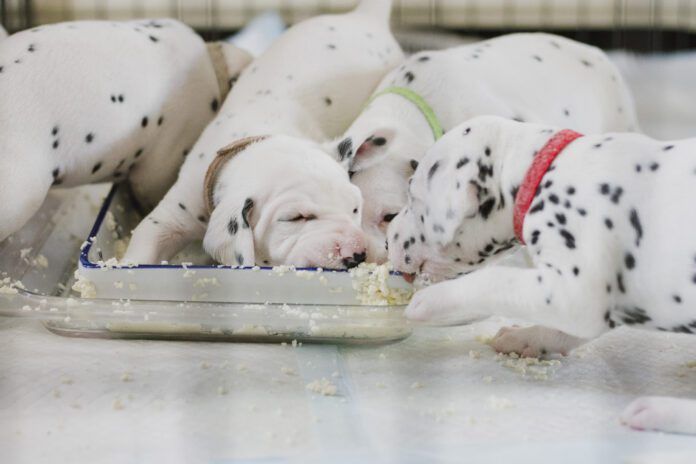With just a couple of exceptions, every time I have fostered a dog or litter of puppies, I’ve done it for my local shelter. While sometimes I disagree with the shelter’s policies or am frustrated with the shelter’s limitations, if any of the dogs or puppies I am fostering for them has a medical issue, the shelter will treat the dog or pups at their expense – it doesn’t come down to my ability to pay an unexpected vet bill, and I’m grateful for that.
A friend in my area runs a small rescue organization, the Durham Doggie Posse +Kittens!, which she and one of her best friends operate out of their homes. Lisa and Melissa obtained a nonprofit charity status some years ago, and solicit for donations from their friends and people who follow them on social media – and frequently raise funds by doing things like baking and auctioning off cheesecakes and fruit pies, or jams made with fruit from their own fruit trees. (And I’m sure quite a bit of their own money goes into feeding and providing veterinary care for the dogs and puppies, cats and kittens they rescue and place.) They sometimes pull unclaimed animals from local shelters, but they also trap feral cats and get them spayed/neutered, and have also responded to pleas from local residents who found abandoned litters or injured animals.
Recently, they took on the job of fostering a litter of 11 puppies from a local shelter, with most of the puppies staying at Lisa’s home and a few fostered in friends’ homes. So far, all but four pups have been spayed/neutered and adopted into loving homes – but a few days ago, one of the puppies in the care of one of the foster providers stopped eating and drinking. Not wanting to burden her friend with caring for a sick pup, Lisa brought the pup back to her own home – and then took the pup to our local veterinary emergency room the next day. The pup had come down with parvovirus – and a day later, the second pup in the same home followed his sister’s symptom path.
This little organization cannot afford to pay for the gold standard of care for parvo – a couple days (at least) of hospitalization and IV fluids and medication – for one puppy, much less two. Lisa asked the veterinarian what she could do to care for the pup (now two pups) at home.
Fortunately, there is an alternative to the gold standard of care, which is hospitalization with fluids and other medicines administered via IV. (We published an article about this 10 years ago, here.) The College of Veterinary Medicine & Biosciences at Colorado State University’s Veterinary Teaching Hospital developed an outpatient treatment protocol a decade ago that has saved countless canine lives at a fraction of the cost of gold standard care. The protocol (available here) calls for the administration of subcutaneous fluids and doses of antibiotics and anti-emetic drugs, as well as anti-nausea and pain medication if needed. Once, it was common for veterinarians to suggest there wasn’t an outpatient alternative for puppies who were sick with parvovirus (it was hospitalization or euthanasia), but this protocol has shown an 80% to 90% success rate in pulling through these patients.
That doesn’t mean it’s cheap: Veterinary supervision, tests, the fluids and drugs – this all adds up. But it makes the cost of treating these shelter pups about $500 to $600 apiece, instead of $4,000 or more apiece.
And it’s not easy, or for the faint of heart! Providing all this care is a lot of work – especially since care must also be taken to keep the sick pups away from other animals in the household, and lots of cleaning and disinfecting goes into preventing the infection from spreading outside the care provider’s household. And administering sub-Q fluids – piercing the puppy’s skin with a fairly large-gauge needle – is scary at first. I’ve fostered only one puppy who needed the administration of sub-Q fluids several times a day, and I found it to be fairly nerve-wracking. If I had a dog who needed this care on a regular basis, I’m sure I could get used to it, but as a complete rookie, it was daunting! My heart completely goes out to Lisa, who is providing treatment for both puppies twice a day.
The good news is, the second puppy (who received treatment faster than the first pup, given that the diagnosis was all but ensured with the arrival of his very first symptom) bounced back very quickly and is able to eat and hold down food. And even the sicker first puppy, who had the burden of being more underweight even before they were sick, is starting to eat and is (so far) holding down her small meals.
Given my own puppy fostering experiences, and the fact that I know that these puppies may well have been euthanized if they had the bad luck to “break” with parvo while they were still in the shelter, I can only shake my head in admiration for these local sheroes. Toss them – or your own local shelter or rescue group! – a dollar or two if you can, won’t you? (Here is a link to Lisa’s Venmo account; ordinarily, folks bring checks to Lisa’s home, and while she has this Venmo account, she hasn’t yet set up one for the Doggie Posse.) This work is unrelenting and draining, and everyone involved could use a little help.


